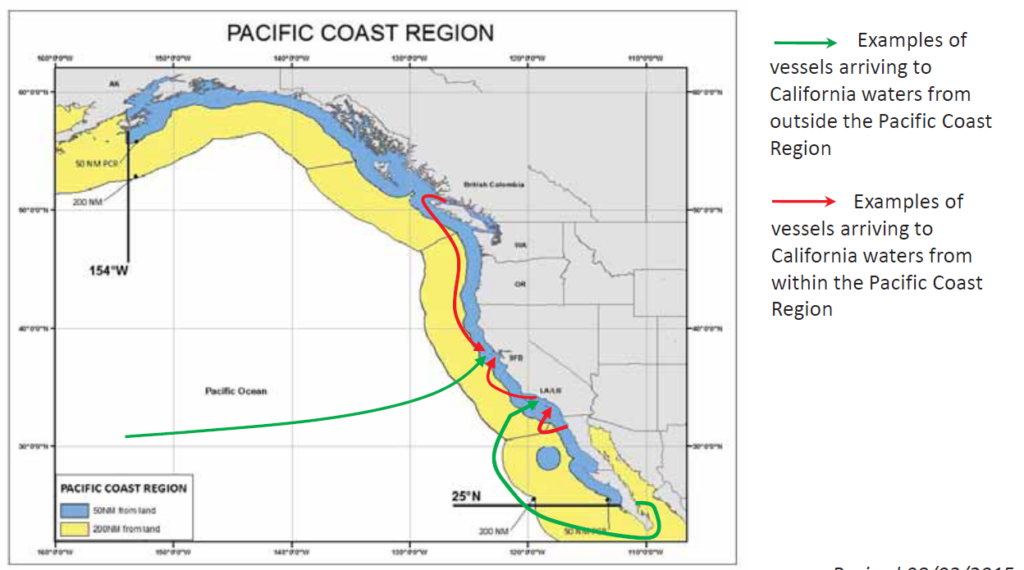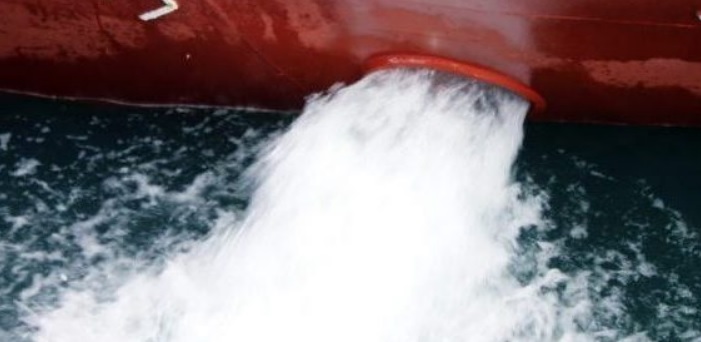California’s ballast water management regulations are included in the Marine Invasive Species Act (MISA), which can be found within the California Public Resources Code (PRC) and title 2 California Code of Regulations (CCR). These regulations are implemented by the California State Lands Commission, the West of England P&I Club says.
Applying to all vessels of 300gt and above, the regulations require vessels conducting ballast water exchanges to do so at a distance from land dependant upon the vessel’s last port of call:
- Vessels calling at a California port or place arriving from a port or place located outside of the Pacific Coast Region* (“PCR”), and carrying ballast water sourced outside the PCR, are to conduct ballast water exchange at least 200nm from any land at a depth of at least 2,000m;
- Vessels arriving at a California port or place from within the PCR, and carrying ballast water sourced from the PCR, are required to conduct ballast water exchange at least 50nm from any land at a depth of at least 200m.
[smlsubform prepend=”GET THE SAFETY4SEA IN YOUR INBOX!” showname=false emailtxt=”” emailholder=”Enter your email address” showsubmit=true submittxt=”Submit” jsthanks=false thankyou=”Thank you for subscribing to our mailing list”]
Vessels also must submit a US Coast Guard Ballast Water Management Report to the California State Lands Commission, which is additional to any report submitted to the National Ballast Information Clearinghouse.
There is also a MISP Annual Vessel Reporting Form which has to be submitted 24 hours before the ship’s first arrival at a Californian port for each calendar year.
The CCR includes a recently revised definition of land, be it ‘material of the earth, whether soil, rock, or other substances that sit landward of, or at an elevation higher than the ocean’s mean high-tide line. Land includes rock outcroppings or islands located offshore’. Thus, small islands and outcroppings such as Isla Socorro, Isla San Benedicto, Rocas Alijos and Isla Guadalupe fall within the definition of land.
For this reason, ballast water exchanges must be carried out according to the above mentioned distances from these outcroppings to not breach MISA. In some cases, this will require exchanges to occur over 350nm from the coast of Baja California.

Fines for breaching these regulations are based on a ‘per tank’ basis and can be significant. Varying from US$5,000 per tank for a minor violation (exchange taking place between 180-200nm from land) to US$27,500 per tank for a major violation (no exchange taking place).
Vessels calling at California ports should therefore ensure they have prepared a ballast water management plan to comply with the MISA and are advised to carefully consult up-to-date charts to ensure that their plan takes into account the location of rock outcroppings
The West of England P&I Club informs.
Finally, California will be introducing stricter ballast water discharge performance standards, with interim performance standards planned to be implemented on 1st January 2020. The final ballast water discharge performance standard, which will require zero detectable living organisms for all organism size classes, will be implemented on 1st January 2030.


























































